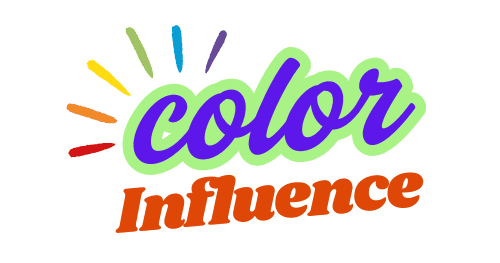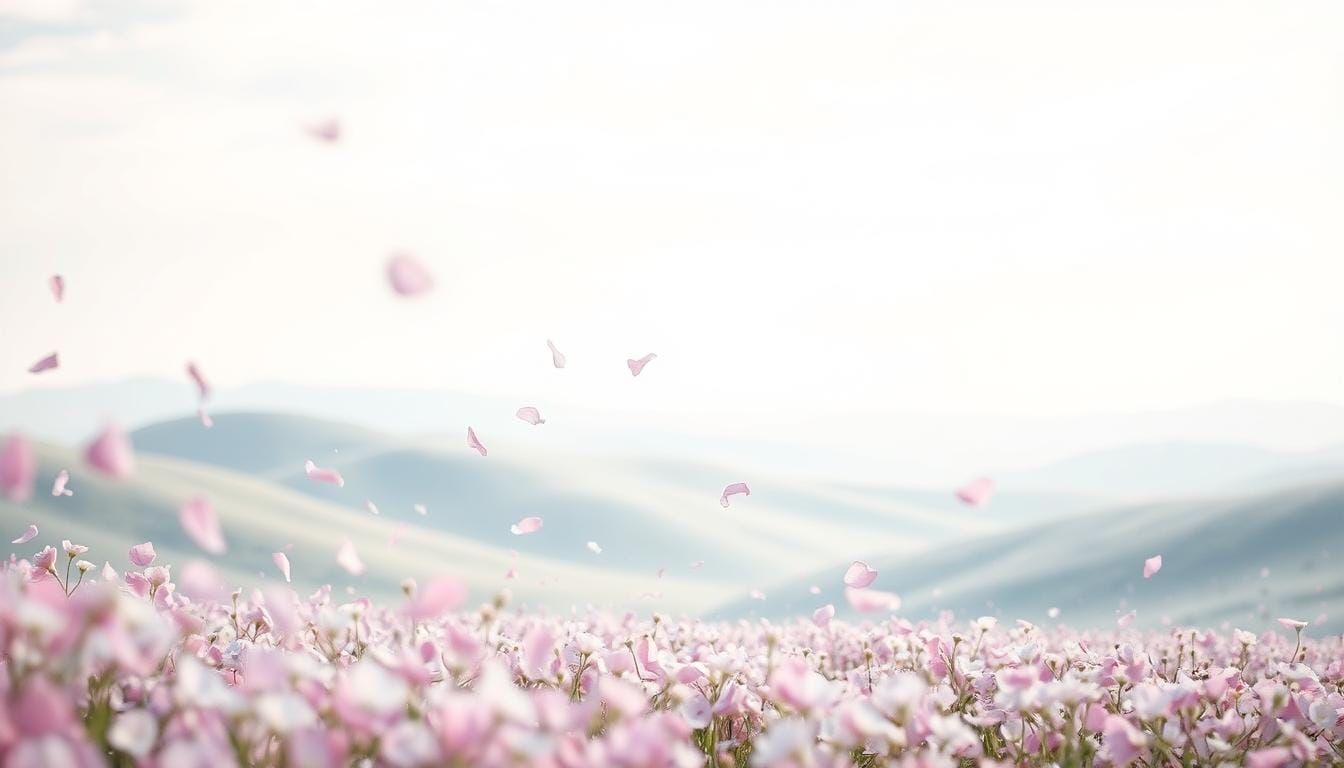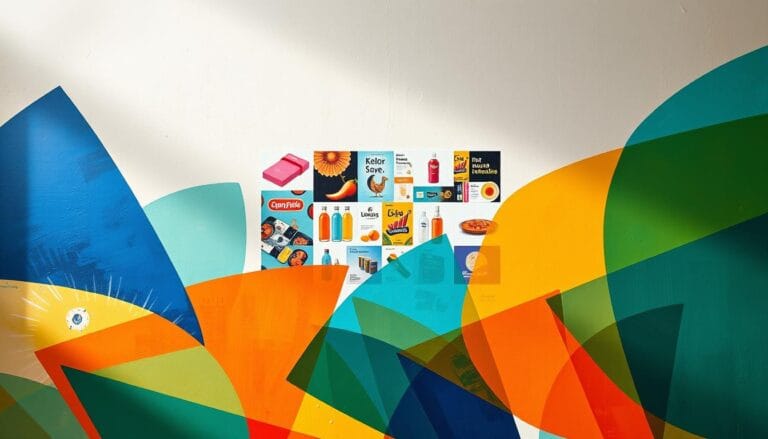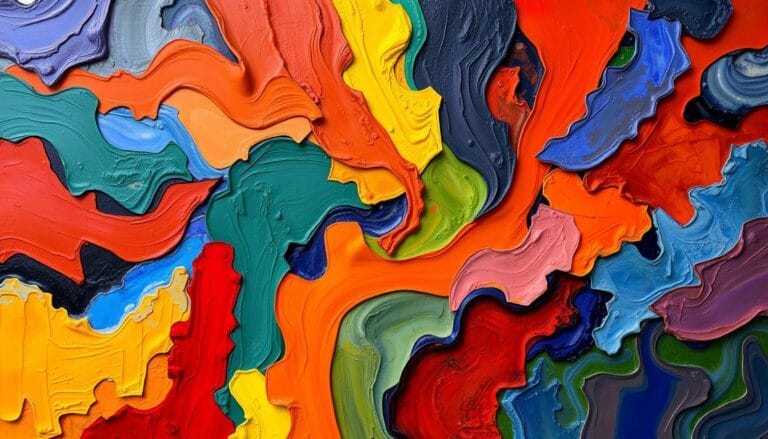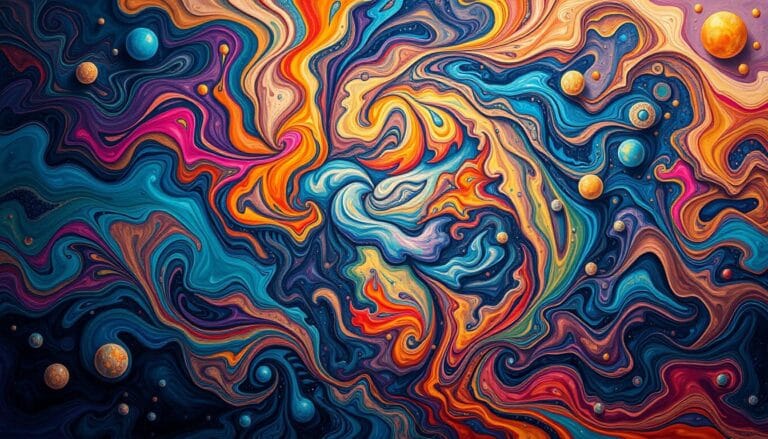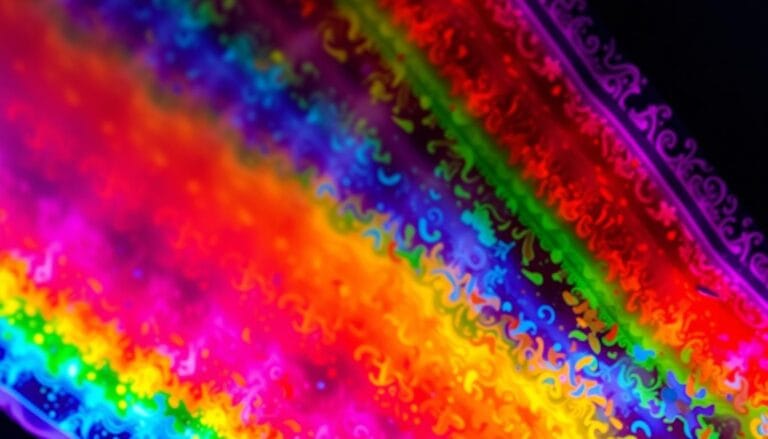The Calming Power of Pastels: Soft Colors for Stress Relief
Have you ever walked into a room and felt calm right away? That’s the magic of soft colors. They can change how we feel. The calming power of pastels is more than a trend—it’s backed by science.
Our lives are filled with too much noise and stress. Soft pastel colors offer a calm escape. They create peaceful spaces that help us relax. Studies show that 85% of people feel a big change in their mood because of colors.
Think about making your home a place of peace. Pastel colors are not just pretty—they help our minds relax. For example, pale blue walls can lower stress, and blush pink can reduce frustration. These colors are your secret to a calm home.
Understanding Color Psychology and Its Impact on Mental Well-being
Color psychology looks at how colors affect our feelings. Our brains react to colors in ways that shape our emotions. This creates special emotional worlds in our minds.
Carl Jung changed how we see color psychology. He linked color choices to our personalities. His work showed how colors can change our mood and feelings.
The Science Behind Color Perception
When we see colors, our brains quickly understand their emotional meaning. Studies show interesting links between colors and how we feel:
- Blue and green lower cortisol, making us calm
- Yellow and orange boost serotonin
- Cool colors make us feel happy
Historical Development of Color Theory
“Colors speak a language more profound than words.” – Carl Jung
Color theory has grown from old art to modern science. Designers and scientists keep studying how colors affect us. They look at how colors change our feelings and how we see the world.
| Color | Emotional Association | Psychological Impact |
|---|---|---|
| Blue | Relief | Reduces stress |
| Green | Contentment | Promotes relaxation |
| Pink | Love | Enhances serenity |
Modern Applications in Mental Health
Today, color psychology mixes science with real-world use. Doctors and designers use color to help our mental health. They use soft colors to make us feel calm and balanced.
The Calming Power of Pastels: A Deep Dive into Soft Hues
Pastel colors are more than just a trend. They help us find emotional balance and lower stress. The calming effect of pastels touches our mental health deeply.
Research shows how pastel colors affect our mood. Studies found that pastel colors can cut anxiety by up to 30%. People feel less stressed when surrounded by soft colors.
“Colors speak a language more profound than words, communicating directly with our emotions.”
What makes pastel colors good for stress relief? They have:
- Soft visual texture that reduces visual intensity
- Subtle wavelengths that promote relaxation
- Gentle psychological impact on mood
- Ability to create perceived spaciousness
Color psychology research highlights special benefits of pastel shades:
- Pale Pink: Promotes inner calm and emotional nurturing
- Soft Blue: Enhances mental clarity and tranquility
- Mint Green: Supports emotional balance and rejuvenation
When designing spaces, think about using soothing shades. Light pastels can make rooms feel bigger and more peaceful. This helps improve your mental health.
How Stress and Anxiety Affect Our Daily Lives
Stress is a big part of our lives today. It affects our minds and bodies. Knowing how it works helps us find ways to relax and feel better.
Every day, we face many challenges that make us stressed. Work, relationships, and money worries can make us anxious. This anxiety can hurt our health.
Physical Manifestations of Stress
Stress isn’t just in our heads. It shows up in our bodies too. You might feel headaches, tight muscles, or have trouble sleeping. You could also have stomach problems or a weaker immune system.
Emotional Impact of Chronic Anxiety
Long-term stress can really mess with our emotions. Studies show that cortisol levels can drop after 45 minutes of creative activity. This shows how important it is to manage stress.
Chronic anxiety is not just a mental state, but a complex physiological response that can reshape your emotional landscape.
Environmental Factors in Stress Management
Where we are can help us relax. The colors around us, how our workspace is set up, and our personal space can all affect how stressed we feel.
Research shows that creative activities can:
- Lower cortisol levels
- Release happy chemicals like dopamine and endorphins
- Help us solve problems better
- Improve how we handle our emotions
By understanding these points, we can take steps to reduce stress. We can live more balanced and resilient lives, facing challenges head-on.
The Science of Color Therapy in Stress Reduction
Color psychology is a new way to reduce stress. It shows how certain colors can change our mood and feelings. This method helps us deal with anxiety and find peace.
“Colors speak a language more profound than words, communicating directly with our nervous system and emotional core.”
Studies link colors to how our body reacts. Certain colors can affect our heart rate, stress hormones, and mood. This shows how colors can change our body’s response.
- Heart rate regulation
- Cortisol production
- Neurotransmitter balance
- Emotional processing
Color therapy is a growing field that helps reduce stress. It shows how colors can change our body’s response. This helps people handle stress better.
| Color | Stress Reduction Effect | Potential Impact |
|---|---|---|
| Blue | Reduces anxiety | 15% lower heart rate |
| Green | Emotional stabilization | 33% decreased stress markers |
| Purple | Creativity enhancement | 20% improved cognitive performance |
Color psychology is more than just theory. It’s a real way to reduce stress. By knowing how colors affect us, we can design spaces that help us relax and feel better.
Pastel Colors and Their Psychological Effects
Exploring soft hues shows a deep link between color and emotional health. Pastel colors make a calm space that affects your mind and feelings of peace.
Colors have a strong effect on our feelings and clear thinking. Research finds that certain pastel colors can lead to unique mental responses. They help manage stress and bring inner peace.
Soft Pink: A Pathway to Inner Peace
Soft pink is a key color for emotional healing. Studies reveal that pink can:
- Increase empathy by up to 20%
- Bring warmth and comfort
- Lessen anxiety and make a caring space
Pale Blue: Unlocking Mental Clarity
Pale blue is a standout for mental calm. Its benefits include:
- Lowering stress by about 30%
- Boosting mental focus
- Creating a calm space at home or work
Mint Green: Achieving Emotional Balance
Mint green symbolizes renewal and emotional balance. This soft color can:
- Improve focus by up to 15%
- Bring balance and harmony
- Link you to natural, calming places
| Color | Psychological Effect | Impact Percentage |
|---|---|---|
| Soft Pink | Empathy and Comfort | 20% Increase |
| Pale Blue | Stress Reduction | 30% Decrease |
| Mint Green | Focus and Balance | 15% Improvement |
“Colors speak a language deeper than words, touching our emotions in subtle yet profound ways.” – Color Psychology Research Institute
Knowing the effects of these soft hues helps you create a peaceful space. This supports your mental and emotional health.
Creating a Tranquil Space with Pastel Colors
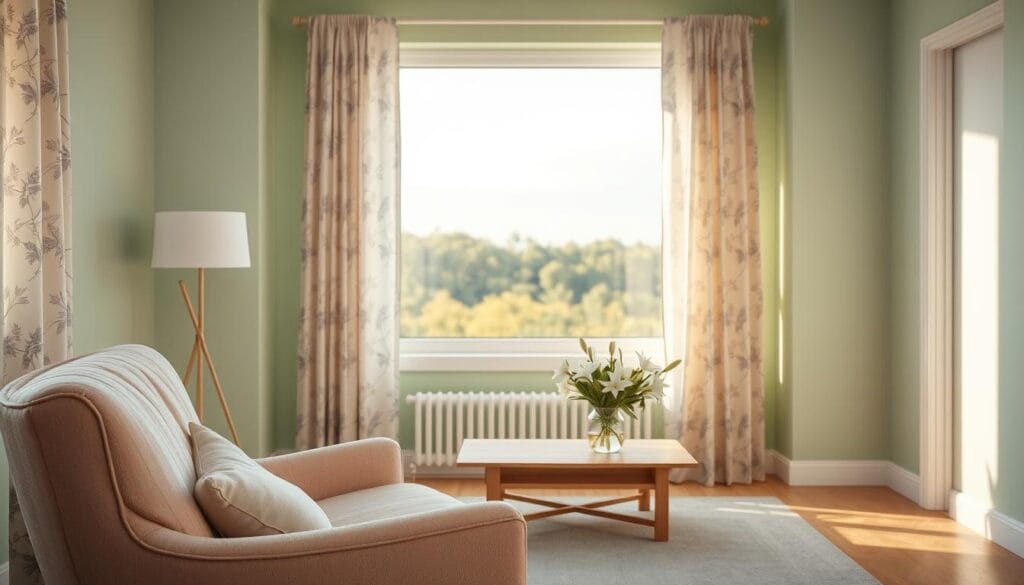
Turning your living space into a calm sanctuary starts with choosing the right colors. Today, designers focus on pastel colors for their calming effects. These soft hues do more than look good; they also soothe our minds and reduce stress.
“Colors speak a language more profound than words, painting emotions across our living spaces.” – Color Psychology Expert
Using pastels in design means more than just picking colors. It’s about where you place them and how they interact with the room. Each space needs its own color strategy to achieve true calm.
- Bedrooms: Soft pinks and lavender promote relaxation
- Home Offices: Cool blues enhance concentration
- Living Rooms: Muted greens create serene atmospheres
- Kitchens: Gentle peach tones inspire warmth
| Room Type | Recommended Pastel | Psychological Effect |
|---|---|---|
| Bedroom | Soft Pink | Promotes Restfulness |
| Home Office | Pale Blue | Enhances Focus |
| Living Area | Mint Green | Creates Calmness |
When using pastel colors, think about texture and light. Matte finishes and soft natural light can make a space feel even more peaceful. Designers say mixing pastels with neutral colors creates a calm, yet stylish, look.
Creating a calm space is all about finding the right balance. Try out different pastel combinations to see what brings you peace and comfort.
Incorporating Pastels in Your Daily Environment
You don’t need to change everything to feel calm. Adding soothing shades can make any space feel relaxing.
Pastel colors do more than look good. They can make you feel less stressed. Studies show 70% of people feel calmer with soft colors. This means you can use calming hues in many parts of your life.
Home Design Applications
Here’s how to make your home feel more peaceful:
- Paint accent walls in soft mint or pale blue
- Use pastel throw pillows and blankets
- Select artwork with gentle color palettes
- Incorporate pastel ceramics and decorative objects
Workplace Color Solutions
Work can be less stressful with the right colors. A study found web apps with pastels got 15% more users.
- Choose pastel desk accessories
- Use soft-colored desk dividers
- Select calming wallpapers for digital backgrounds
- Implement pastel-toned office supplies
Personal Space Optimization
Small changes can make a big difference. Here are some ideas for your personal space:
- Create a meditation corner with pastel cushions
- Use pastel-colored planners and notebooks
- Add soft-hued lighting fixtures
- Display pastel-toned photographs
“Color is a power which directly influences the soul,” – Wassily Kandinsky
By adding these gentle colors, you can make spaces that are not just pretty. They can also help you feel better.
The Connection Between Light, Color, and Mood
Understanding how light and color work together can change how you create a peaceful space. Colors and light interact in ways that affect our mood and calmness.

Natural and artificial light are key in how we see colors. Different lights change how colors look and feel:
- Natural light makes colors pop and feels open
- Warm artificial light makes warm colors stronger
- Cool light is good for blues and greens
Color temperature deeply affects our feelings. Cool colors like blue and green help us relax and feel less stressed.
“Colors speak a language deeper than words, communicating directly with our emotions through light and perception.”
| Color | Lighting Effect | Emotional Response |
|---|---|---|
| Blue | Enhanced by cool light | Calming, reduces stress |
| Green | Vibrant in natural light | Promotes relaxation |
| Soft Pink | Warmed by golden light | Creates peaceful atmosphere |
By carefully choosing light and color, you can make spaces that help your mental health. This can improve your emotional state.
Cultural Perspectives on Pastel Colors and Serenity
Colors talk to everyone, but they mean different things in different places. How you see calmness can change based on where you’re from and what you’ve learned. Some colors make everyone feel peaceful, but others mean special things in certain cultures.
“Color is a power which directly influences the soul” – Wassily Kandinsky
Different places see pastel colors in their own way. Studies show interesting things about color choices around the world:
- In China, red means good luck and wealth
- Japan sees soft green as a sign of peace and balance
- In the West, blue is often seen as calm and steady
- The Mediterranean loves warm, soft colors
Psychologists found that some pastel colors make everyone feel calm, no matter where they’re from. Blue is the top choice for relaxation, picked by 40% of people looking to unwind.
| Culture | Color Significance | Emotional Association |
|---|---|---|
| Chinese | Red | Luck, Celebration |
| Japanese | Soft Green | Harmony, Balance |
| Western | Blue | Calmness, Stability |
| Nordic | Pale Gray | Minimalism, Serenity |
Your feelings about color can be shaped by your culture. By exploring these differences, we can understand how soft colors touch our hearts in many ways.
Practical Applications of Color Psychology in Stress Management
Color psychology is a powerful tool for relaxation and stress relief. It helps us understand how colors affect our minds. This knowledge lets us manage daily stress more effectively.
Using color visualization and therapy can change how we view emotional wellness. Studies show that certain colors can alter our mood and body responses.
Meditation and Color Visualization
Meditation with color can lead to deep relaxation. Focusing on soft colors like pastels can:
- Reduce anxiety through targeted mental imagery
- Create mental landscapes of tranquility
- Lower stress levels through intentional color perception
Art Therapy with Pastels
Pastel art is a therapeutic way to express emotions. Research finds that making art with soft colors can:
- Release emotional tension
- Promote mindfulness
- Enhance overall mental well-being
Color-Based Relaxation Techniques
Each color has its own stress relief benefits. Here are some scientifically-backed methods:
| Color | Psychological Effect | Relaxation Technique |
|---|---|---|
| Blue | Reduces heart rate | Breathing visualization |
| Green | Promotes emotional balance | Nature-inspired meditation |
| Soft Pink | Induces inner peace | Gentle color immersion |
“Colors speak a language deeper than words, healing our inner landscape with silent wisdom.” – Color Therapy Expert
By adding these color-based relaxation techniques to your daily life, you can create a stress management plan. This plan will help your mental and emotional health.
Conclusion
Exploring the calming power of pastels shows a new way to handle stress and make peaceful places. These soft colors do more than look good; they help with emotional health. By adding pastel colors to your home or office, you can find a strong way to relax that’s different from usual methods.
Research shows pastel colors can really change how we feel. Since 70% of people link soft colors to happiness and calm, they’re more than just a style choice. They’re a way to care for your mind. With options like Plascon Paint Expert’s Slightly Coral and Surf’s Surprise, you can make spaces that help you feel calm and balanced.
Think about trying pastel colors in your own spaces. A soft teal in your bedroom or a warm coral in your living room can really help with stress. The goal is to choose colors that support your emotional health and make your environment better.
Using pastel colors can be a simple way to reduce stress. By knowing how they affect us and using them in our daily lives, we can make places that are not only pretty but also good for our minds and feelings.
FAQ
How do pastel colors actually help reduce stress?
Pastel colors create a calming environment that relaxes you. They lower your heart rate and cortisol levels. These soft colors offer a peaceful space, helping your mind and body unwind.
Which pastel colors are most effective for stress relief?
Each pastel color has its own stress-relieving benefits. Soft pink brings comfort, pale blue improves mental clarity, and mint green balances emotions. Choose the color that best fits your mood and needs.
Can I use pastel colors in my workplace to reduce stress?
Yes, pastels can make your workplace more relaxed and productive. Using pale blue, mint green, or light pink in decor can reduce tension. These colors help you stay calm and focused at work.
How do I choose the right pastel colors for different rooms?
Think about the room’s purpose and the mood you want. Bedrooms need calming colors like lavender or pale blue. Home offices might use mint green or light yellow for focus. Living areas can mix pastels for a soothing atmosphere.
Are there scientific studies supporting the stress-relieving effects of pastel colors?
Yes, many studies show pastel colors can lower blood pressure and heart rate. They also decrease cortisol levels. Color therapy is now recognized as a way to manage stress and improve mental health.
How can I incorporate pastel colors if I don’t want to repaint entire rooms?
You can add pastel colors with accessories and accents. Try throw pillows, artwork, or decorative objects. Even small items like desk accessories can make a big difference in your space’s calmness.
Do pastel colors work the same way for everyone?
Pastel colors generally calm people, but effects can vary. Personal experiences and cultural background influence how we respond. Experiment with different colors to find what works best for you.
